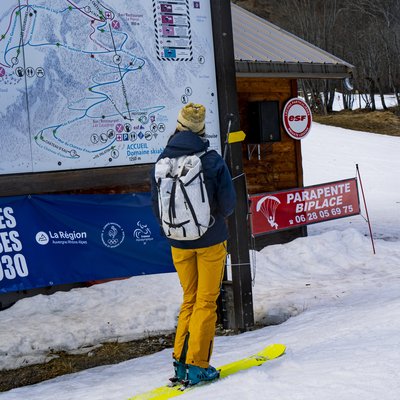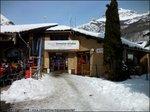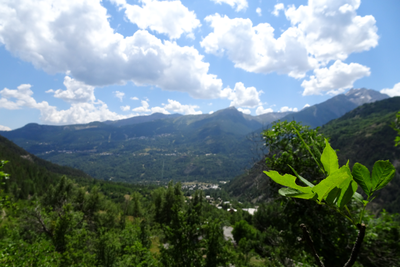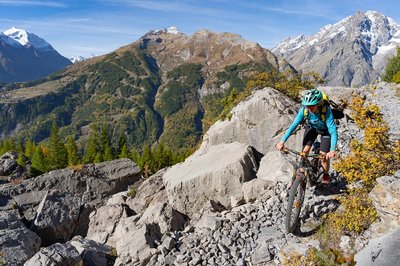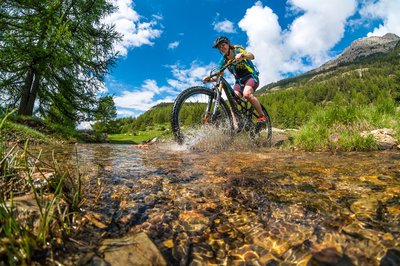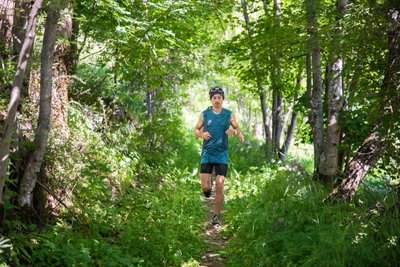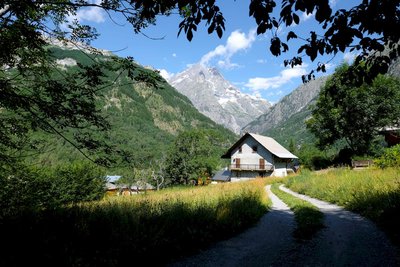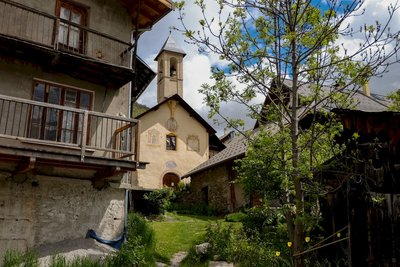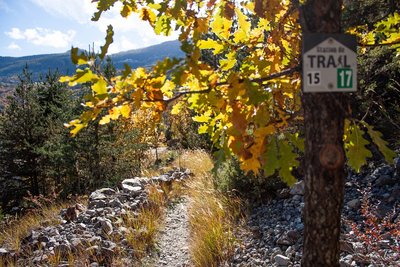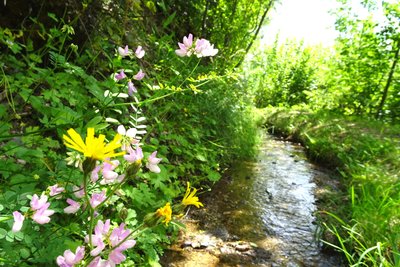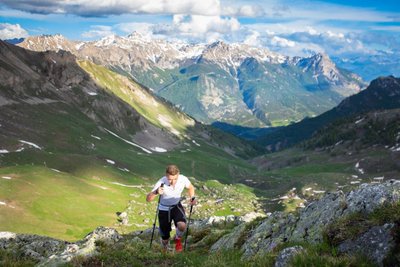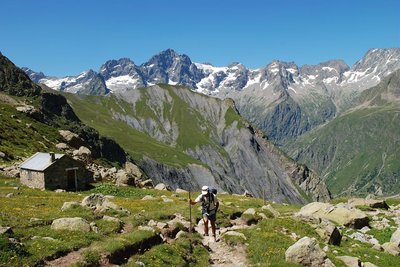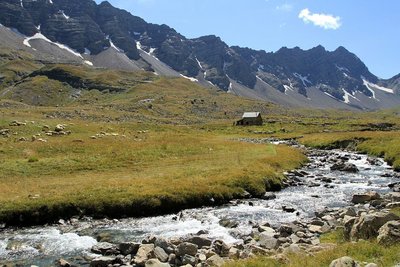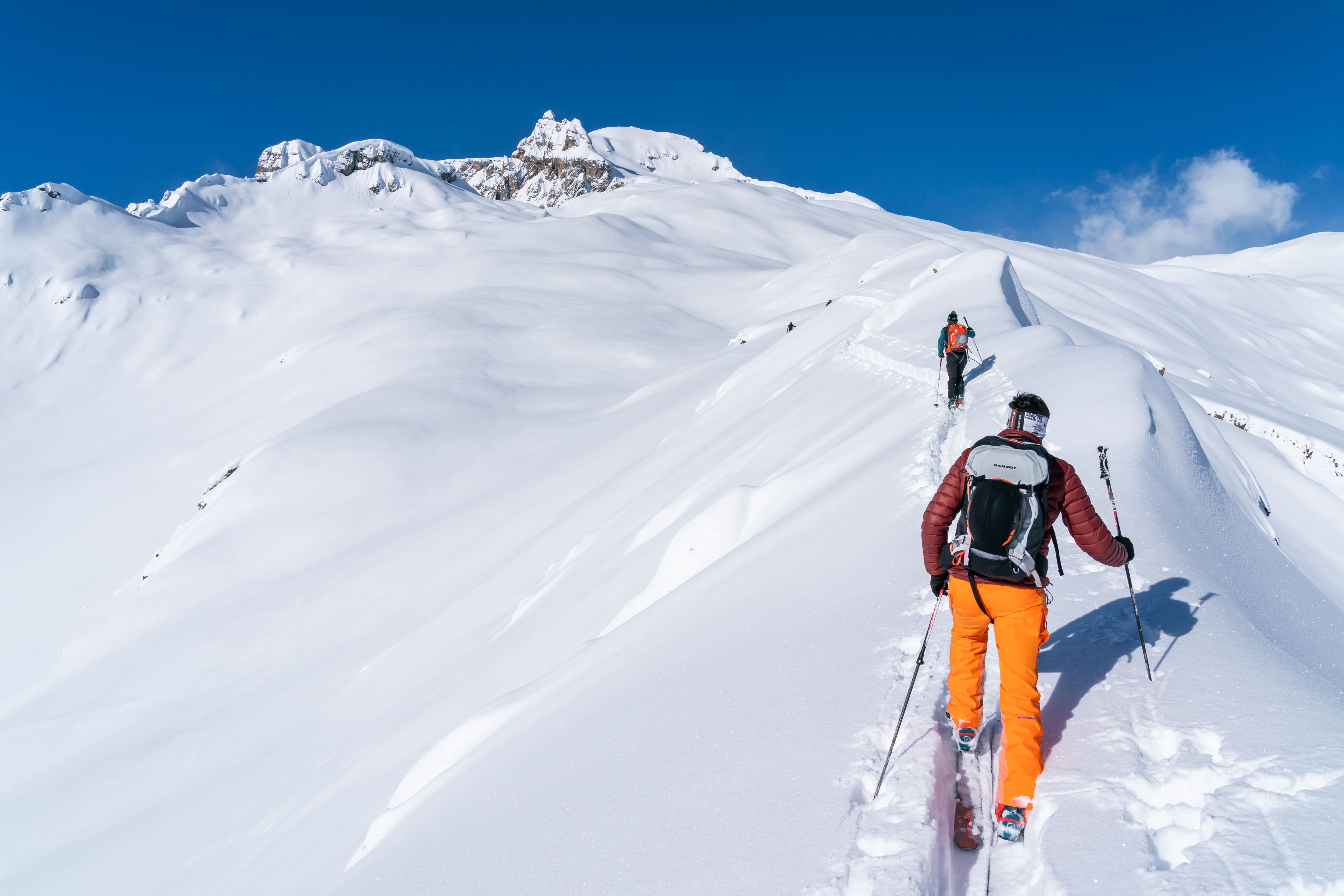
Pelvoux ski resort
Description
From the N94 Gap-Briançon, turn off at l'Argentière-la-Bessée towards Puy-Saint-Vincent - Vallouise (D994E).
Once in Vallouise, continue towards Pelvoux-Station.
Useful links :
To consult the conditions of the ski area, click here.
Information on access and transport is available in the Practical Info section of our website: https://www.paysdesecrins.com
Parking : We recommend parking at the Pelvoux resort parking lot.
Access to the resort is forbidden after 4:30pm.
Allow grooming in complete safety and peace of mind for drivers. When you walk or snowshoe on groomed sections, you leave tracks that will harden overnight and remain the next morning.
Think of your own safety!
Don't forget that a grooming machine in use presents risks (limited visibility inside and powerful rotating parts). Some machines are equipped with a winch with a tensioned cable that runs for almost 1,000m on the alpine ski slopes being prepared. This cable, at man's height, cannot be seen at night, and can be life-threatening.
- Towns crossed : Vallouise-Pelvoux
Les 1 parcours à découvrir
Recommandations
→ You undertake these routes at your own risk. Please check the weather conditions, snow conditions, and avalanche risks provided by Météo France, as well as by Tourist Information Offices before starting.
→ You must have the necessary safety equipment : avalanche transceiver (DVA), shovel, probe, and first aid kit.
→ Night time activities on the resort are prohibited unless supervised by a professional and subject to the authorization of the slope service.
→ Several routes are shared with cross-country skiers, snowshoe hikers, pedestrians, sled dogs, and trail runners. Please be cautious.
→ It is forbidden to ascend along the ski slopes unless indicated by signage. In this case, you do not have priority when crossing these slopes.
→ Respect the signage: dangers, prohibitions, direction of slopes, among others.
→ Do not overestimate your abilities!
→ Take your trash with you!
→ During your off-piste ascents and descents, you may come across triangular fenced areas: these are areas for protecting the wintering grounds of the black grouse. Respect these areas and do not cross them.
→ Consider bringing a guidebook to have all the information about ski touring routes at your fingertips.
Attention: This information is provided for guidance only. It is your responsibility to check the weather forecast before your departure and not to overestimate your abilities. The Tourist Office and the National Park Authority cannot be held responsible in case of accidents. If in doubt, seek advice from professionals: instructors or equipment rental shops.
Emergency contact Mountain Rescue : dial 112
Information desks
La Casse Vallouise, 05340 Vallouise-Pelvoux
266 Route des Essarts, 05340 Vallouise-Pelvoux
Station de Ski de Pelvoux, 05340 Vallouise-Pelvoux
23 points of interest
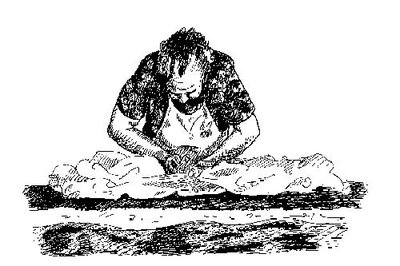
Mère Denis - PNE  Know-how
Know-howThe "bua"
Before the year's work began in the fields, the women would spend a special day washing the winter's linen. This was called the "bua". A second was organised in the autumn. The bed linen brought outside to be washed with soap, in cold water. A brief rinse and second wash in soap completed this pre-wash step, called «essangeage». The laundry was then «poured» nto a wooden vat, lined with a coarse canvas.
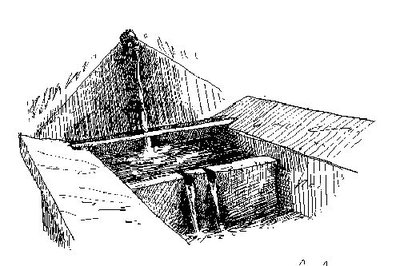
Lavoir - PNE  Know-how
Know-howThe "coulage" laundry day
The dirtiest linen at the bottom and a large sheet last, which collected the wood ash. The «used» water was collected and reheated several times until the «washing powder» (potash from the ash) had achieved the required standard of cleanliness. Often, a few stems and roots of soapwort were added to give the water a soapy quality. The «coulage» sometimes took up the entire day and the house was filled with a pleasant smell! Finally, the laundry was wheeled on a barrow to the pond for rinsing. Small items were spread out on the blanched grass in the meadow.
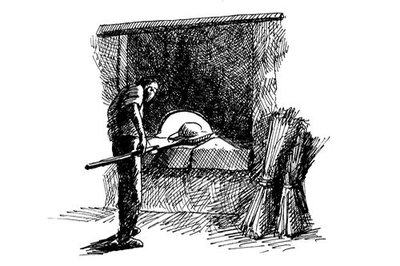
Four banal - PNE  Vernacular heritage
Vernacular heritageBread oven
It is already there on the Napoleonic land register, and was renovated by the town less than 10 years ago with original stone and fire-resistant brick for the vault. Each village had a communal oven saving wood and social ties explain the importance of shared bread baking. Almost a whole month, day and night, between November and December, was devoted to baking bread. The ritual is now carried on in summer baking during religious feast days or other local events.
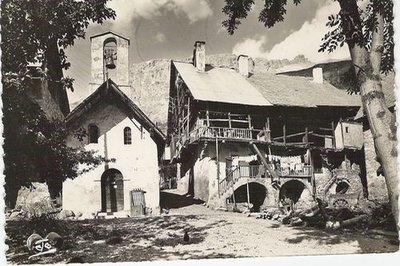
La chapelle du Poët - PNE  History
HistoryLe Poët chapel
A portrait of St-Pancras, the patron saint of the Poët chapel, was once painted on the façade, dressed as a crusader. On his feast day, 12 May, there was a morning mass and we made rice pudding to share with inhabitants from other towns who had journeyed there. Almost two months earlier, the feast of Saint-Joseph was celebrated with a mass in Le Sarret, with families from neighbouring villages invited to eat stew and the traditional rice pudding.
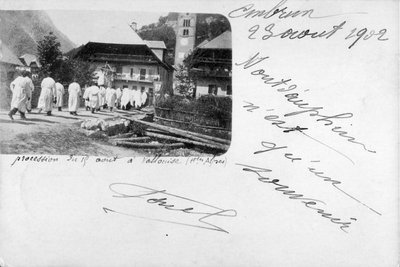
Procession des pénitents blancs à Vallouise (coll. Robert Balestra) - Robert Balestra (collection) ©  History
HistoryThe White Penitents
In the 19th century, the White Penitents took part in the religious life of the villages of Le Poët and Le Sarret. All the male villagers were members, and they played a special role during funerals. They first sang the misere in front of the deceased’s house and then accompanied the funeral procession, dressed in hooded habits, with a banner, bell, staves and lanterns. A macabre confraternity whose symbol was a skull and crossbones...
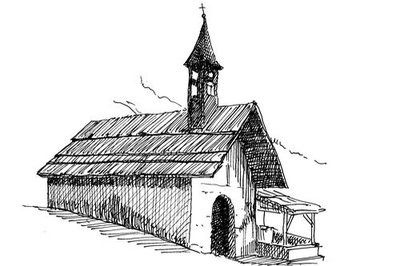
La chapelle du Sarret - PNE  History
HistoryLe Sarret chapel
Before 1930, the main road passed in front of Le Sarret chapel. Burials took place in Le Poët until the 1940s, when the cemetery was moved to make way for the new road to Pelvoux.
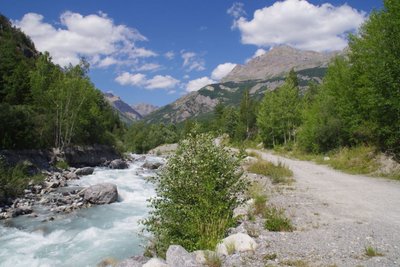
Forêt au bord du Gyr - Office de tourisme Pays des Écrins  Flora
FloraForest on the water's edge
This small wood is a fragment of the riparian forest: natural forest growing adjacent to a body of water. Reduced everywhere due to urbanisation, this type of forest is made up of alder, willow and oak, and also poplar, birch and aspen, among others
Cincle plongeur - Mireille Coulon - Parc national des Ecrins  Fauna
FaunaThe white-throated dipper
Perched on a rock in the middle of the river, a squat bird with a short tail, brown with a large white bib, bobs up and down with his tail in the air. He then dives and only reappears a few moments later. This is how this bird hunts, diving into the water and then walking against the current along the river bed searching for aquatic insect larvae, small crustaceans or small fish, lifting pebbles with its beak to dislodge them.
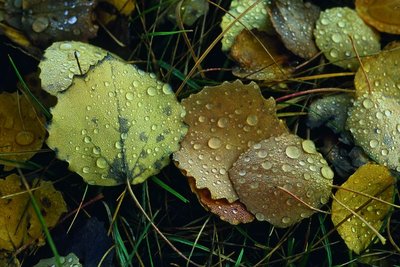
Des feuilles de tremble - Bernard Nicollet - Parc national des Écrins  Flora
FloraThe aspen
On the right, a stand of aspens with smooth, greenish trunks and rounded, crenelated leaves take on magnificent colours in autumn. The stem, or petiole, of aspen leaves is flat and twisted, so it can be caught by the slightest breeze making the foliage «quake» hence its common name, the quaking aspen.
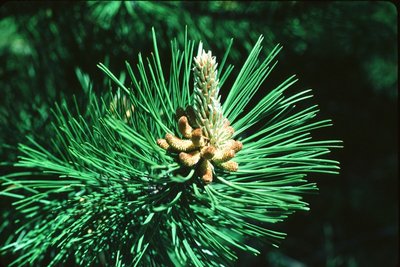
Aiguilles de pin sylvestre - Parc national des Écrins  Flora
FloraForest of pine and oak
The path now alternates between cleared areas and forested areas. This forest contains Scots pine (recognisable by its orangey coloured trunk, especially at the top), downy oak (its young branches and leaf undersides covered with a fine down), and larch. The Scots pine and downy oak are very drought-tolerant (it is very limey soil here) and can also withstand low temperatures, and they are typical of the montane zone in this part of the Alps.
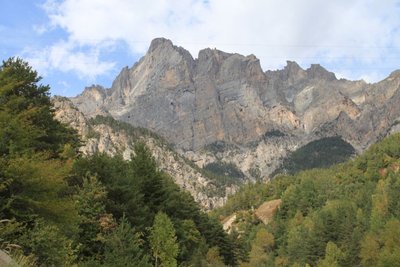
Le massif du Montbrison - Office de tourisme Pays des Écrins  Panorama
PanoramaThe Montbrison massif
The path offers a beautiful overall view of the limestone massif of Montbrison, overlooking the hamlets of Pelvoux with the peaks of the Cime de la Condamine, the Tête des Lauzières, the Pic de Montbrison and the Tête d'Amont.
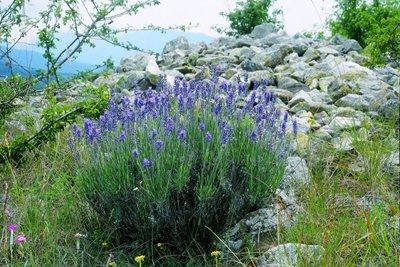
La lavande à feuilles étroites - Jean-Pierre Nicollet - Parc national des Écrins  Flora
FloraThe narrow-leaved lavender
The path crosses some limestone screes. It is a dry environment. The narrow-leaved lavender grows in sunny areas, a reminder that the Pays de Écrins is in the Southern Alps after all! Not to be confused with the lavandin, this plant naturally grows on rocky slopes in the mountains of the Midi.
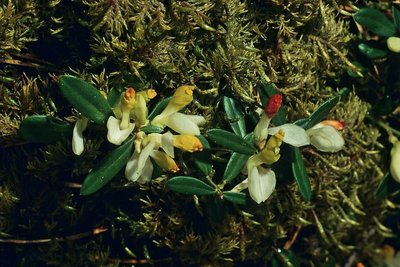
Polygale petit buis - Jean-Pierre Nicollet - Parc national des Écrins  Flora
FloraThe shrubby milkwort
The shrubby milkwort grows in the undergrowth. This creeping sub-shrub has glossy oval leaves, similar to box leaves. The flowers are white and orangey yellow. Common in the Alps, it grows in open woods and dry forests.

Hameau de Puy Aillaud - Jean-Philippe Telmon - Parc national des Écrins  History
HistoryThe hamlet of Puy Aillaud
Puy Aillaud is a permanently inhabited hamlet and the highest in Vallouise (1,580 m). This hamlet has preserved some beautiful traditional houses.
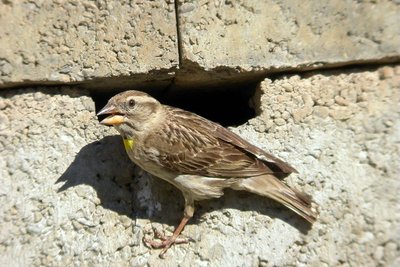
Le moineau soulcie - Damien Combrisson - Parc national des Écrins  Fauna
FaunaThe rock sparrow
A little flock of rock sparrows can often be spotted around Puy Aillaud. This large sparrow earned its French name moineau soulcie, (sourcil meaning eyebrow) because it has a large white eye-stripe. It also has a dark head, a brown back with white stripes, and a white breast and underside striped with light brown. It has a small yellow throat spot, often not visible. It is a year-round resident.
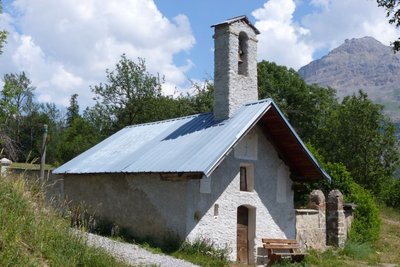
La chapelle Saint-Jean - Office de tourisme Pays des Écrins  History
HistoryThe chapel of Saint-Jean
Surrounded by a cemetery and with a bench installed to the front of its façade, this pretty little seventeenth century chapel has an air of peaceful tranquillity. Maybe to sit and watch the trail runners?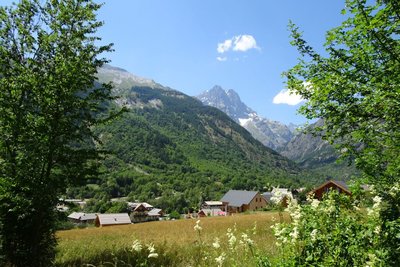
Pelvoux - Office de tourisme Pays des Écrins  History
HistoryPelvoux
Pelvoux is made up of a succession of small hamlets: Le Poët, Le Sarret, Le Fangéas, Saint-Antoine, Les Claux, Chambran and Ailefroide. Until 1893, Pelvoux was actually called La Pisse, after the name of the L'Eychauda waterfall. Since this name attracted wide mockery, it was changed to Pelvoux. “Peuvo” and “pelva” mean very high mountain, a nod to Mont Pelvoux, one of the highest peaks within the municipality’s territory.
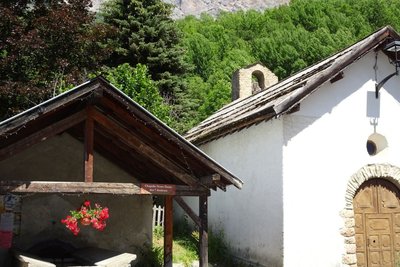
La chapelle aau Fangeas - Office de tourisme Pays des Écrins  Vernacular heritage
Vernacular heritageThe minor heritage of Pelvoux
Every hamlet has its own chapel. In the territory of Pelvoux, Les Claux has the chapel of Sainte-Barbe with a restored sun dial dating from 1792. The seventeenth-century chapel of Saint-Pancrace is in Le Poët. In Le Sarret, you can admire the chapel of Saint-Joseph and the chapel of Notre-Dame des Sept Douleurs stands in Le Fangeas. Every hamlet has its own communal oven and water fountains as well. Finally, the church of Saint-Antoine is located in the hamlet of Saint-Antoine. It has a sun dial dating from 1810.
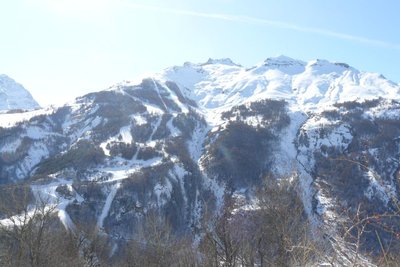
Vue sur la station de Pelvoux - Office de tourisme Pays des Écrins  History
HistoryThe ski resort of Pelvoux-Vallouise
In the winter, Pelvoux-Vallouise is a ski resort that is close to nature, with very good sun exposure and high quality snow. With 35 kilometres of marked pistes, off-piste skiing, cross-country skiing, a toboggan run, a children's snow club, snowshoe hiking, paragliding and more, Pelvoux is a family-oriented resort suitable for all levels of ability.
In the summer, a number of trails start from the various hamlets. You can also take part in mountain biking, enjoy a very fine via ferrata, go swimming...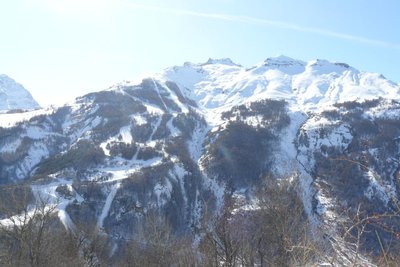
Vue sur la station de Pelvoux-Vallouise - Pelvoux Office de tourisme du Pays des Écrins  Vernacular heritage
Vernacular heritageThe ski resort of Pelvoux-Vallouise
The route first leads through the small ski resort of Pelvoux-Vallouise, built in 1982. Very family-focused, in winter it's the ideal place for young children to learn to ski, with small lifts lower down, while their big brothers and sisters can ski higher up.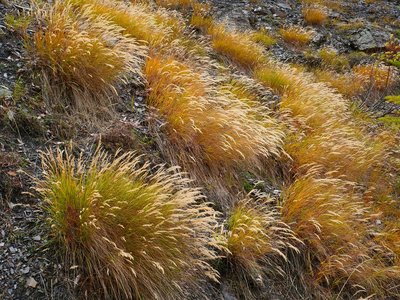
Le calamagrostide argentée - Nicolas Marie-Geneviève - Parc national des Écrins  Flora
FloraSilver spike grass
A grass grows in large clumps on the embankment: silver spike grass. It is adapted to stony, dry and sunny ground. Its inflorescences reflecting silvery-gold glints create a beautiful effect, but they are particularly noticeable in the late summer, when it forms large shimmering bouquets in the evening sunlight.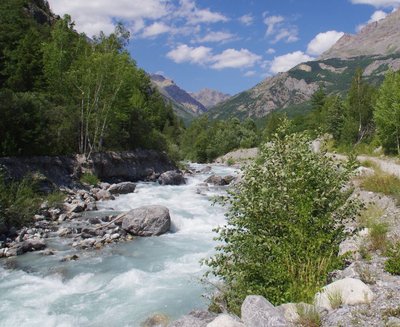
Le Gyr - Office de tourisme du Pays des Écrins  Water
WaterThe Gyr
Humans are decidedly bizarre animals: they build, knock down and start again. To protect the new infrastructures of Pelvoux, the Gyr was dammed. But, not able to flow as it did before, it deepened its bed, thus placing the foundations in danger of damage. And so works were carried out to widen its bed, allowing it to flow more naturally. This is also more favourable for biodiversity, as well as protecting the developed urban areas.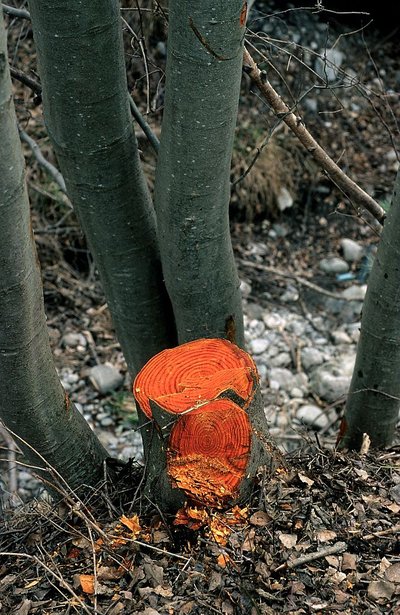
L'aulne blanc - Nicollet Bernard - Parc national des Ecrins  Flora
FloraThe grey alder
In the valleys of the Alps and the Jura, the grey alder often grows in place of the black alder, present in many parts of France. Like its cousin, it grows on riversides and plays an important role in stabilising the banks. If it is cut down, its wood is bright orange in colour. But why cut it down?
Access
Source


